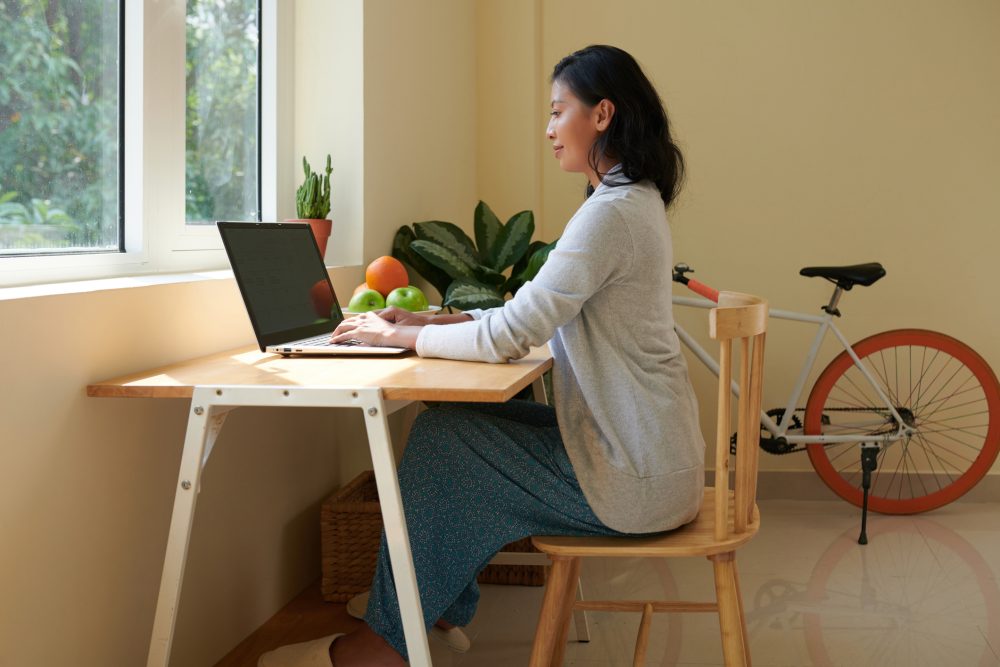Having a healthy spine makes for an active lifestyle and a pain-free body, so taking care of it should be a priority in our daily lives. Unfortunately, many of us tend to neglect our spine health until we start feeling back aches or neck pains.
According to the World Health Organization, about 619 million people worldwide have low back pain problems. Fortunately, some cases of LBP go away on their own. But for some people, the pain may turn into a chronic condition. Chronic conditions could limit mobility and have a negative impact on one’s quality of life.
Keeping your spine in optimum condition doesn’t require taking special medication. In fact, experts say that adopting healthy lifestyle habits and knowing pain management techniques can be effective in improving spine health and minimizing pain.
Here are three ways to help keep your spine healthy:
One – Practice Good Posture While Sitting
According to pain management specialist Dr. Brandon Claflin, there are various pain solutions that are available for those experiencing lower back pain or spine pain. Some of these include non-invasive treatments such as epidural steroid injections or medial branch block injections to numb painful areas. However, the medical expert also advises that cases of low back pain can be easily prevented by practicing good posture while sitting.
Sitting in a slouched or hunched position is one of the most common causes of lower back pain in office workers and students since it strains the lumbar discs. Constant pressure on your discs can move them out of position, which could result in herniated discs.
Possible Effects of Poor Posture
Poor posture can also result in upper back and neck pain when sitting since you’re constantly craning your neck or leaning forward to see your computer screen. To prevent aches and pains, sit up straight and keep your shoulders level. You may also consider using an ergonomic chair since it supports the natural curve of your spine and prevents slumping.
Prolonged sitting can also cause back pain, so be sure to take breaks whenever you can. Stand for 10 to 15 minutes for every two hours of sitting, and walk around or do some light stretching. You can also invest in a standing desk so you can be productive while you’re on your feet.
Two – Get Moving
Many people experiencing back or spine pain try to be sedentary as there’s a misconception that physical activity can trigger pain flare-ups. Although it’s wise to avoid contact sports, snowboarding, trampolining, and any other sport that strains the spine, sometimes moving can help. Workouts can strengthen the back and reduce spine pain (but check with your doctor before getting started.)
Some of the best exercises to improve spine health can include swimming — a low-impact aerobic sport that’s generally safe for those with back pain. Walking can also be beneficial for back health but see to it that you’re wearing proper walking shoes with adequate arch support to help reduce the risks of pain flare-ups.
Exercises with slow, gentle movements, such as yoga and tai-chi, may also contribute to spine health without aggravating back problems or causing joint pain. The important thing to know is which exercises will be the most beneficial for your back issues — IH North Sydney chiro can provide you with specialized physio exercises that will get you back to full strength sooner.
Three – Upgrade Your Bed
Do you often wake up with a sore back or neck pain? It could be that your bed is causing your back problems. Sleeping on an overly soft mattress or a mattress that offers no support results in strained muscles and poor sleeping posture, which leads to lower and upper back pain.
Mattress
For better sleep quality and to prevent back pain, switch to a medium-firm mattress or an orthopedic mattress. This can help to support your joints. It promotes better spine alignment while you sleep. If you prefer a softer mattress, memory foam (designed to support the natural curve of your spine and relieve pressure buildup) might deserve a place on your shopping list.
Pillows
If you’re upgrading your mattress, take a good look at your pillows too since they may need to be replaced. A pillow that’s too thin or flat might not provide enough support for your head and neck. One that’s too thick or fluffy can have a negative effect on your spine alignment and cause back pain and a stiff neck.
Consider choosing a memory pillow to support your neck and head and for proper spine alignment while sleeping on your back or side. Also, maybe buy a second pillow and place it between your knees to prevent your hips from twisting while you sleep.
Have a Healthy Spine for an Active and Happy Life
Your spine health can be enhanced by making some healthy lifestyle choices. It could be time to improve your sitting posture, get enough exercise, and upgrade your bed to strengthen your back. Hopefully, reduced pain, improved mobility, and a better quality of life are on the horizon. If back or spine pain persists, consult a board-certified pain management specialist for proper treatment.
Want to learn more tips and tricks for living an imperfect yet happy life?
Snag a free workbook and get inspiration on all the ways to love your life even more.
>>Click Here to Discover Additional Articles on Choosing Happiness <<









